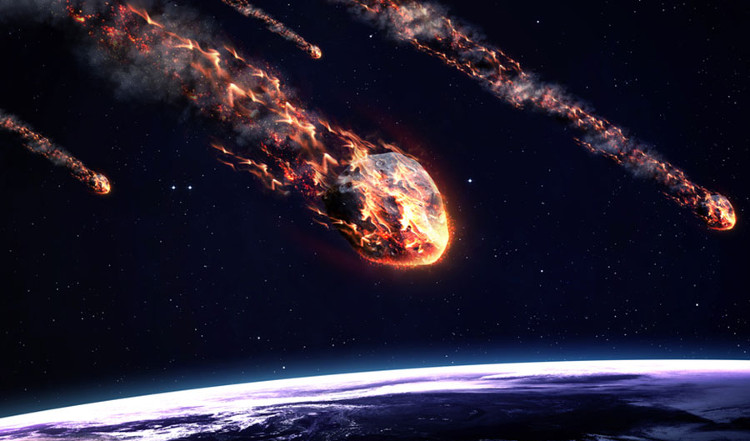Things you don't know about meteors
What is meteorite? A very familiar question, seemingly easy, but it has been riddled with many people.
What is meteorite?
According to Wiki, meteorite, according to the Chinese character meaning "heavenly stone" , currently in Vietnamese is used inconsistently, to refer to many types of celestial objects with completely different nature.
The meteorite (meteoroid) is a natural object from outer space and affects the surface of the Earth. While in the universe, it is called a sandstone . When an asteroid from outer space falls into the Earth's atmosphere, the compressive pressure causes the meteor to heat up and emit light, which may have burned the outer layer. It produces a "meteor" point-like phenomenon and often has an outward-facing tail. Some meteors are large enough and the nucleus is difficult to evaporate, which can fall to the Earth's surface, leaving a tablet or solid block and this is still called "meteorite" (meteorite).

The meteorite (meteoroid) is a natural object from outer space and affects the surface of the Earth.
In addition, the rock meteorite has not been altered due to the melting or transformation of the mother meteorite source, called chondrit.
Often when meteorites move with rapid acceleration and when hitting the surface of a planet or asteroid, it leaves on the surface of the planet fragments or traces of impact. We can clearly see NASA images of space on the Moon because there is no wind or above Mars (Mars).
The world has found a lot of places where the meteorite crash is left behind. As of mid-2006, there were about 1050 meteorite samples worldwide from collisions and about 31,000 meteorite records.
How to recognize meteors
According to Nguyen Duc Phuong, Vietnam Astronomical Society said that meteorites have their own characteristics that can be distinguished by the naked eye."The meteorite surface is usually black and glossy. There are also meteorites on the surface that have smooth round indentations, or cracked lines due to erosion and explosion in the air," Phuong said.

Willamette meteorite found in America in 1902. (Photo: Wikipedia).
Besides, outside the metamorphic section of the meteorite will see many particles in small, 1-3 mm diameter.
- In terms of volume , meteorites are usually heavier and firmer than regular stones. Meteors usually contain a certain amount of iron, magnetically, using a magnet to identify.
- In terms of color , meteorites are usually black, or blackish yellow due to oxidation.
According to the book of ten thousand questions, why, the major component of meteorites is iron and nickel, of which iron accounts for about 90%, nickel 4-8%. The amount of nickel in natural iron on earth is not so much. If you cut the cross section of the iron meteorite and apply nitric acid to it, very special pits appear, like flower cells. This is because the composition of substances in the iron meteorite is unevenly distributed, where there is much less nickel. A lot of nickel is difficult to be corrosive to acid and vice versa, creating veins. This is also a way to identify meteors.
But, according to Mr. Phuong, when someone has a meteorite in hand, it is best to ask an expert to have an accurate conclusion.
- Meteorites like 65,000 atomic bombs are about to stab the Earth?
- The American spacecraft will crash into the meteorite
- Video: Huge meteorite glides through the American sky
- NASA continues to hunt for dangerous meteors
- The truth about meteors
- NASA asked people to hunt for killer meteors
- The meteorite that cleans humanity is just a matter of time.
- Meteors explode into night in Siberia
- Meteors exploded near the US air base
- The 5 largest meteors ever plunged to Earth
- Russian meteorite turned into
- Meteors speed over 140,000km / h rush through the sky
- Russia upgraded missiles to shoot meteors and earth
 Van Allen's belt and evidence that the Apollo 11 mission to the Moon was myth
Van Allen's belt and evidence that the Apollo 11 mission to the Moon was myth The levels of civilization in the universe (Kardashev scale)
The levels of civilization in the universe (Kardashev scale) Today Mars, the sun and the Earth are aligned
Today Mars, the sun and the Earth are aligned The Amazon owner announced a secret plan to build a space base for thousands of people
The Amazon owner announced a secret plan to build a space base for thousands of people